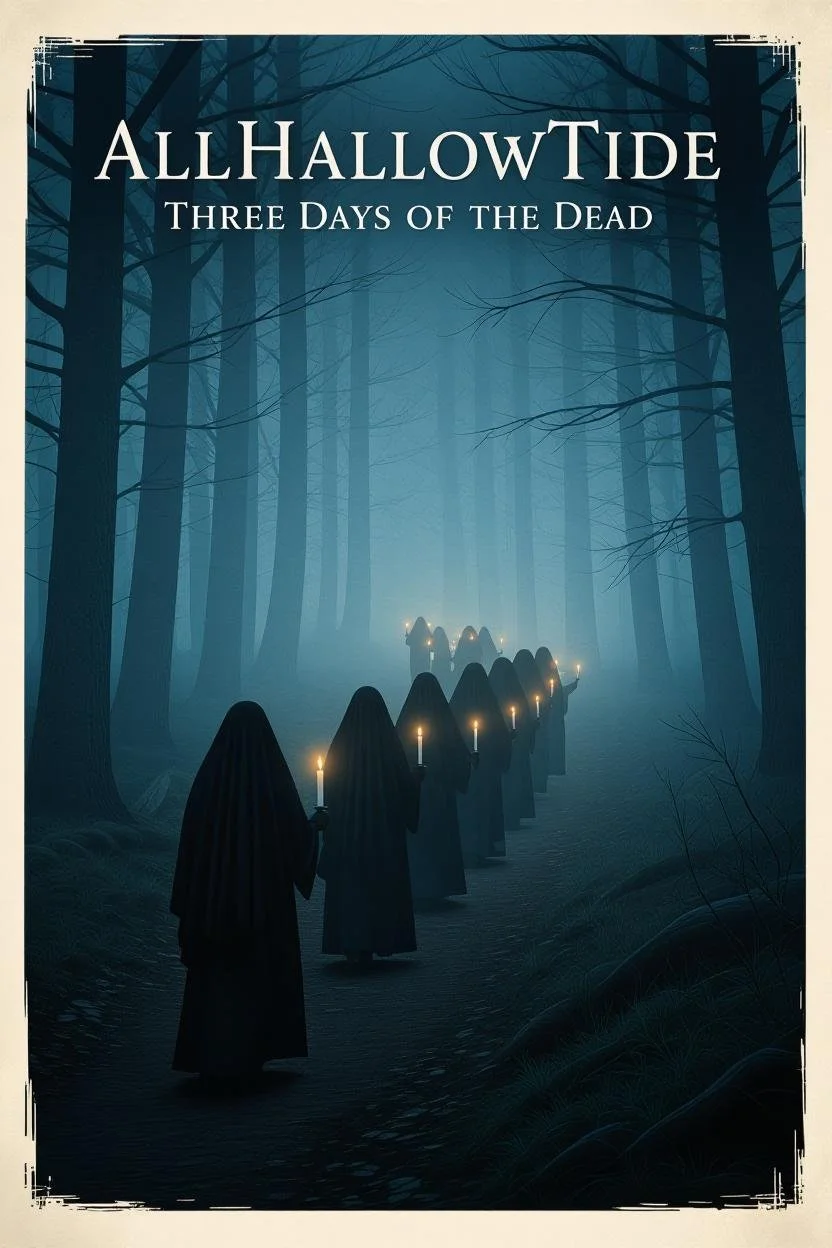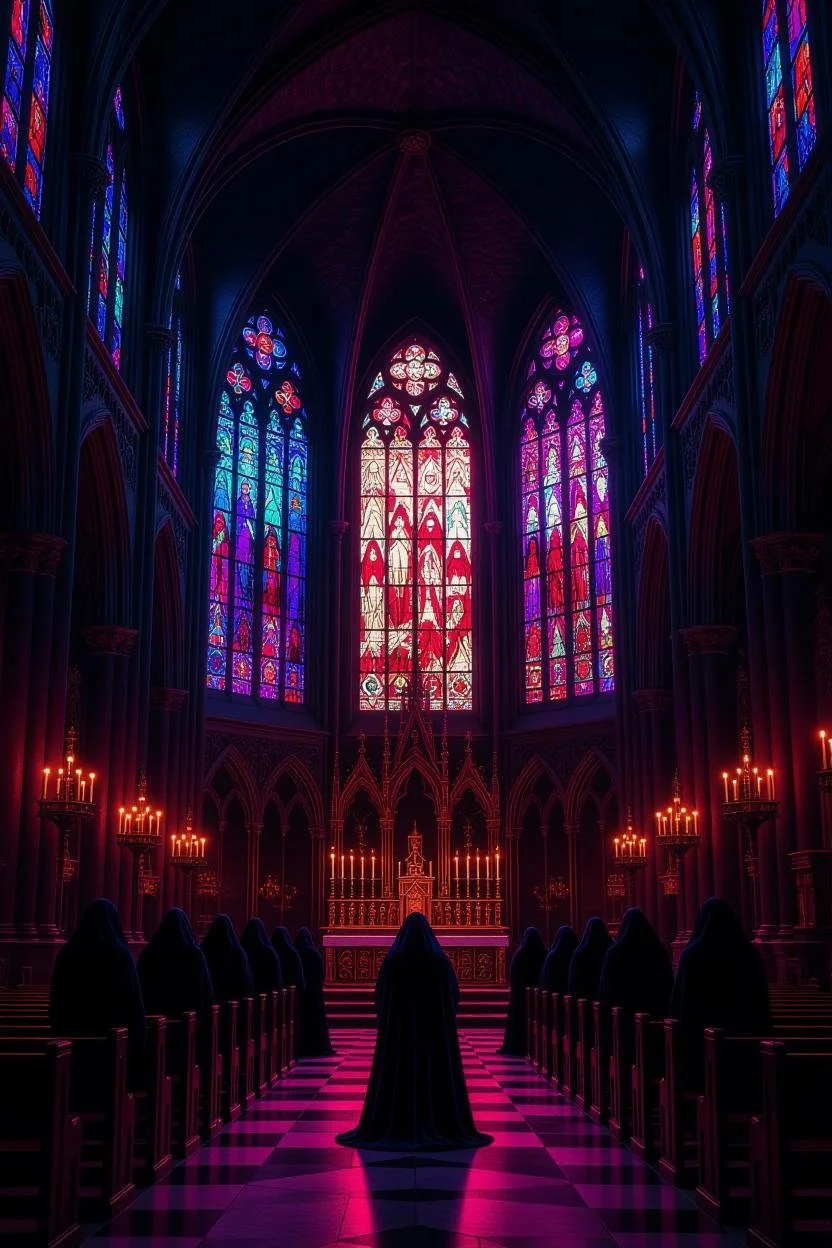What Is Allhallowtide? The Three Days of the Dead…
As the last leaves fall and nights lengthen, the medieval calendar turns toward Allhallowtide—three days devoted to saints, souls, and the turning of the year.
The word comes from hallow (Old English hālga, “holy person”) and tīd (“time” or “season”).
For Christians of the Middle Ages, it was a sacred hinge between worlds: a time to honour the saints in heaven, pray for souls in Purgatory, and remember the dead on earth.
But these days did not arise from nowhere. Long before church bells rang, the Celts gathered at Samhain—literally “summer’s end.” The festival marked the boundary between the light and dark halves of the year, when harvest was over and the veil between living and dead grew thin.
Pagan Origins
Samhain’s fires burned on hilltops from Ireland to the Scottish Isles. Cattle were driven between twin bonfires for protection; hearths were extinguished and relit from the communal flame.
It was a liminal time, when the spirits of ancestors were believed to wander homeward.
Families left food and drink on doorsteps to appease them, while disguises and masks might ward off ill spirits from the Otherworld.
Even the Romans held kindred customs. During Feralia, they visited family graves with cakes and wine to honour the manes—the spirits of the dead. Roman and Celtic cultures merged and these feasts of remembrance coexisted.
Christian Transformation
Christians absorbed many pagan customs
When Christianity spread across Europe, it often absorbed rather than erased older rituals. The Church, eager to make the transition to Christianity as seamless as possible, recognised the people’s need to mark this seasonal threshold and reinterpreted it in spiritual terms.
· The ancient fires became candles of vigil for the souls of the faithful.
· Offerings of food became almsgiving and prayer.
· The honouring of ancestors became the Feast of All Saints, celebrating those who had reached heaven.
By the 8th century, Pope Gregory III established 1 November as the feast of All Saints (All Hallows’ Day), with the evening before it observed as All Hallows’ Eve—later “Halloween.”
A century later, Cluniac monks in France added All Souls’ Day on 2 November, dedicated to praying for the departed.
Thus, the old pagan wheel of death and renewal found new meaning in the Christian rhythm of sanctity and remembrance.
The Three Days of Allhallowtide:
All Hallows’ Eve (31 October) – The vigil: prayers and lights to guide the dead.
All Hallows’ or All Saints’ Day (1 November) – A feast for every saint, known and unknown.
All Souls’ Day (2 November) – A day to pray for all departed souls still journeying toward the light.
Together they form Allhallowtide, the Triduum of the Dead, a season when the boundaries of heaven, earth, and purgatory blur into one continuous act of remembrance.
Legacy
Today, echoes of these ancient days linger in our candles, costumes, and confections.
Halloween’s masks recall Samhain’s disguises; our graveyard flowers and remembrance candles continue All Souls’ prayers.
Through centuries of faith and folklore, Allhallowtide endures as a time when the living remember that death is not an ending, but a threshold.
Next in the series: “Lanterns and Mischief – From Samhain Fires to Punkie Night” (Thursday 30 October).

